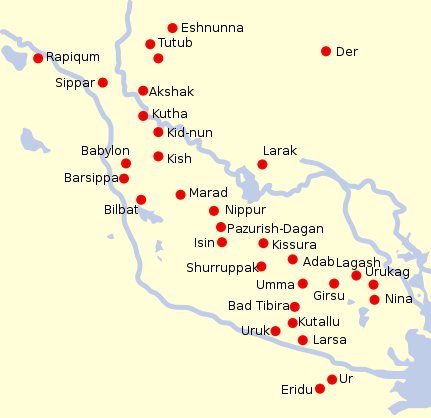The heliacal stars
at the end of the
Gregorian year as
they were in
rongorongo times:
|
Qalb al
Akraab 5 |
6 |
7 (229) |
|
8 |
9 |
|
December
29 |
30 (364) |
31 |
January
1 |
2 |
 |
 |
 |
 |
 |
|
Ca10-28 |
Ca10-29 |
Ca11-1 |
Ca11-2
(286) |
Ca11-3 |
|
te
inoino |
te
tagata |
E
inoino |
te
inoino |
kua
haga |
|
ζ
Pavonis
(283.4) |
λ Cor.
Austr.
(283.6),
Double
Double
(283.7),
ζ Lyrae
(283.8),
φ
Sagittarii
(284.0) |
μ Cor.
Austr.
(284.6),
η Cor.
Austr.,
θ
Pavonis
(284.8),
Sheliak,
ν Lyrae
(285.1) |
λ
Pavonis
(285.7),
Ain al
Rami
(286.2),
δ Lyrae
(286.3) |
κ
Pavonis
(286.5),
Alya
(286.6),
ξ
Sagittarii
(287.1),
ω
Pavonis
(287.3),
ε Cor.
Austr.,
Sulaphat
(287.4)
|
Ain al Rami
('The Eye of
the Archer', ν
Sagittarii)
draws my
attention
because there is
another Ain
in Taurus.
|
Sheratan
9 |
10
(375) |
11 |
|
May
25 |
26
(146) |
27 |
 |
 |
 |
|
Ca3-14
(65) |
Ca3-15 |
Ca3-16 |
|
tapamea
-
tagata
hoi
hatu |
ki
te
ariki |
kiore |
|
no
stars
listed |
Ain,
θ¹
Tauri,
θ²
Tauri
(65.7) |
no
stars
listed |
From Januari
1 (with Ain
al Rami) to
May 26 (with
Ain in
Taurus)
there are
146 - 1 =
145 = 5 * 29
days. At
December 30
(364) we
counted 10 *
29 (from
the numbers
in Ca10-29).
RA day 290
is January
5:
| Shaula 1 |
2 |
3 |
4 (600) |
5 (236) |
6 |
| January 3 |
4 |
5 |
6 (736) |
7 (372) |
8 |
 |
 |
 |
 |
 |
 |
| Ca11-4 |
Ca11-5 |
Ca11-6 (290) |
Ca11-7 |
Ca11-8 |
Ca11-9 |
| tupu te raau i te vai |
te moko |
te marama |
te kava |
manu rere |
te mauga hiku hia |
| λ Lyrae (287.7), Ascella (287.9), Nunki (288.4), ζ Cor. Austr. (288.5) |
Manubrium (288.8), γ Cor. Austr. (289.3), τ Sagittarii (289.4), ι Lyrae (289.5) |
δ Cor. Austr. (289.8), Al Baldah, Alphekka Meridiana (290.1), β Cor. Austr. (290.2) |
Aladfar (291.1), Nodus II (291.5) |
ψ Sagittarii (291.6), θ Lyrae (291.8) |
Arkab Prior (293.0), Arkab Posterior, Alrami (293.2) |
Gregorian
372 is
8 days
beyond
December
30 and
the
glyph
number
11-8
suggests
the 8th
day in
the
month
after
Decem-ber.
It is
not
January
8
because
in the
Gregorian
calendar
also day
365 is
counted.
372 = 12
* 31 =
12 * 29½
+ 12 *
1½ = 354
+ 18 =
236
(Shaula
5) + 136
= 8 *
29½ + 8
* 17 = 8
* 46½ =
4 * 93 =
80 + 292
= 8 * 10
+ 8 *
36½ = 4
* 20 + 4
* 73 = 2
* 40 + 2
* 146 =
2 * 186.
Alrami
is α
Sagittarii,
close to
the
overturned
Corona
Australis:

There is
precisely a week
from Ain
al Rami
to
Alrami.
293.2 -
286.2 =
7.0.
Here Metoro said
te mauga hiku
hia.
| Hiku Tail; caudal fin. Hikukio'e, 'rat's tail': a plant (Cyperus vegetus). Vanaga.
... In the deep night before the image [of Lono] is first seen, there is a Makahiki ceremony called 'splashing-water' (hi'uwai). Kepelino tells of sacred chiefs being carried to the water where the people in their finery are bathing; in the excitement created by the beauty of their attire, 'one person was attracted to another, and the result', says this convert to Catholicism, 'was by no means good' ... (Islands of History) |
Perhaps
Nunki
(another
name
for
Eridu)
at
the
end
of
the
'River',
where
the
'Sea'
was
beginning,
made
Metoro
think
of
'splashing-water'.
January
3 =
Shaula
1 =
manzil
day
number
232
(= 8
*
29).

Tupu
te
raau
i te
vai
is
not
the
same
at
tupu
te
rakau
i te
vai
(in
Ca11-14).
| Rakau Raau, medicine, remedy, drug. Ra'a'u, scratch on the skin. Rakau, a plant. Râkau, goods, property. Vanaga.
1. Wood; rakau ta, cudgel, stick. P Pau.: rakau, tree, to dress a wound. Mgv.: rakau, wood, timber, a tree; medicine, a remedy; an object. Mq.: ákau, wood, tree. Ta.: raáu, id. 2. Medicine, remedy, potion, ointment, furniture, any precious object, resources, baggage, riches, heritage, dowry, merchandise, treasure, wealth; rakau hakaneinei, purgative; rakau nui, rich, opulent; rakau kore, poor, beggar, indigent, miserable, an inferior; hakakamikami ki te rakau, to impoverish; rakau o te miro, ballast. Mq.: akau, anything in general. The medicine sense is particularized in Tonga, Nukuoro, Hawaii, Tahiti, Mangareva, Paumotu. In no other speech does wood stand so fully for wealth of possessions, but it will be recalled that Rapanui is destitute of timber and depends wholly upon driftwood. Churchill. |
|








